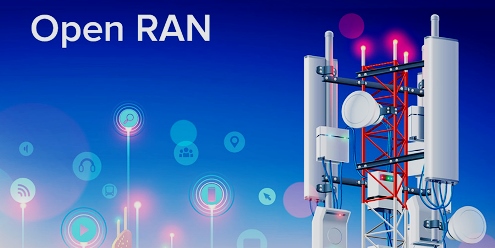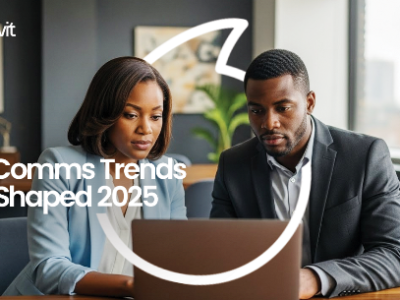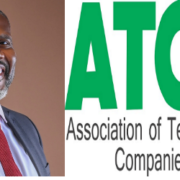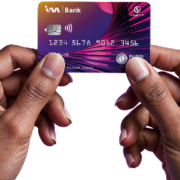The World Telecommunication Development Conference (WTDC) takes place in Kigali, Rwanda, 6 to 16 June 2022. The theme is connecting the unconnected to achieve sustainable development goals. We are pleased to see Doreen Bogdan-Martin take the helm at the International Telecommunications Union (ITU), the first woman to do so in the organization’s 153-year history. Bogdan-Martin has championed connecting the unconnected, more than 3 billion people globally.
Strand Consult has worked with operators in emerging markets for more than 25 years. Mobile telecommunications has had a tremendous positive impact on these regions, a fact which has been documented by the ITU, telecom regulators, and many academics in peer-reviewed papers. The ITU’s digital inclusion effort makes some important points worth restating.
While it is not the focus of the ITU, corruption is also a problem. Transparency.org provides a helpful index of corruption across countries. Corruption, which reduces the integrity and accountability of government, can negatively impact the efficacy of radio spectrum auctions.
Is OpenRAN the solution to connect the unconnected?
Operators’ existing challenges to build mobile networks are only magnified in emerging countries: end users have limited revenue for subscriptions and devices; market structure is likely sub-optimal (regulators have rejected needed consolidation); the governance frameworks to deploy networks may be sub-optimal if non-existent; energy availability and reliability may be a challenge. As such, when a vendor or policymaker comes along promising to reduce operating expenditures by 30-40 percent, it sounds too good to be true, and indeed it is likely false. However, this is what OpenRAN providers say today. However, as Strand Consult documents, not only are these claims untrue, they demonstrate ignorance of the people and challenges in Africa, Latin America, and Asia.
Much of Africa, Latin America and Asia are still 2G/3G markets. Hundreds of millions of people today and in the future will still use phones that only support 2G and 3G. In fact, the most widely used network technologies in Africa and Latin America today are 2G and 3G. Many emerging countries are behind to roll out 4G.
RELATED: Fact vs Fiction: The 10 parameters of OpenRAN
This is not to say that operators in Africa and Latin America are not innovative to add 4G coverage on cell sites and base stations that support 2G/3G they try to innovate and upgrade as much as possible. However, mobile operators face certain limitations as much as they try to economize. While policymakers may want ubiquitous 5G, it is still a challenge to roll it out in many countries, to say nothing of the requirements of end users demand for 5G devices and services as a driver of the technology.
OpenRAN and O-RAN require 4G/5G technologies. They are not substitutes for 2G/3G, nor shortcuts to 4G/5G. Next generation networks still require the installation of regular RAN technologies before any OpenRAN technologies can be used. Simply put, OpenRAN does not offer 1:1 replacement for existing networks in Africa, Latin America, and Asia. This means OpenRAN is not a plug and play solution for low-income subscribers in emerging markets.
GSMA predicts that by 2025 there will still be a substantial 2G and 3G penetration in several regions. In Asia Pacific GSMA predicts that there are 14 percent 3G phones and 7 percent 2G phones in 2025 totaling 21 percent of the market. GSMA predicts that there are 17 percent 3G phones and 7 percent 2G phones in 2025 totaling 24 percent of the market. In Europe GSMA predicts that there are 7 percent 3G phones and 1 percent 2G phones in 2025 totaling 8 percent of the market. In Latin America GSMA predicts 21 percent 3G phones and 5 percent 2G phones in 2025 totaling 26 percent of the market. In MENA, GSMA predicts that there are 36 percent 3G phones and 10 percent 2G phones in 2025 totaling 46 percent of the market. In North America GSMA predicts there are 6 percent 3G phones and 1 percent 2G phones in 2025 totaling 7 percent of the market. In sub-Saharan Africa GSMA predicts that there are 58 percent 3G phones and 12 percent 2G phones in 2025 totaling 70 percent of the market. Overall, there will be over 1 billion 2G and 3G customers by 2025 who do not have a phone that supports 4G or 5G. In many emerging countries, most people will continue to use 2G and 3G for years.
The bottom line is that OpenRAN and O-RAN are not technologies for the more than 3 billion people unconnected in Africa, Latin America, and Asia today and tomorrow. OpenRAN is not a solution for the unconnected who can’t afford a 4G/5G phone.
Another question is whether operators in Africa, Latin America and Asia want to replace existing 4G equipment and establish a set of parallel base stations, for example one set running 2G/3G and another 4G/5G OpenRAN. Note that the rental cost (to tower companies) for cell sites and energy is already high and would increase with a second network on the same site.
Everyone talks about OpenRAN, but no one buys it.
If OpenRAN was the technological revolution as some claim, mobile operators would be lining up to buy it. There is no shortage of OpenRAN hype, but there is limited OpenRAN purchase. Such hype was on display at the 2022 Mobile World Congress. “The Usual Suspects” of select US policymakers and tech companies who recycle arguments from 2020 and exaggerate testing agreements as contracts. This is the sign that companies like Mavenir and Parallel Wireless have likely overpromised and underdelivered.
In any event, there is a marketing push to tell mobile operators in emerging in Africa, Latin America, and Asia that OpenRAN is the solution to their problems. The idea that OpenRAN can cut costs and it is a short cut for 4G/5G is a claim that’s about as true as the emperor’s new clothes are real. The less people know about mobile networks, the more they love OpenRAN.
After some years, OpenRAN has yet to notch a major commercial success. If OpenRAN gets the growth its proponents predict, it will account for less than 1 percent of the 5G mobile sites in 2025; not more than 3 percent in 2030 (install base). It looks like OpenRAN is too little, too late to make a difference in a world in which operators deploy 10,000 classic 5G sites every month. Note that the RAN cost of an average mobile operator is equivalent to about 3% of their ARPU. In practice, this means that if a US operator passed on all OpenRAN savings to customers, the average subscriber would save 40 cents per month.
Investors and other decision makers want objective information about the latest mobile industry hype. Strand Consult’s free report “Debunking 25 Myths of OpenRAN” examines the claims made by OpenRAN proponents. Strand Consult, having witnessed the launch of WiMax, OneAPI, and the iPhone among other hyped technologies promised to bring windfall revenues to mobile operators, provides critical questions to evaluate OpenRAN in its latest report.
Strand Consult’s goal is to create objectivity and transparency about the actors promoting OpenRAN so that mobile operators, investors, and other stakeholders can make informed decisions. Strand Consult finds it telling that OpenRAN proponents have not wanted to answer its critical questions addressing financial, economic, technical, and practical points about the technology. This is particularly evident at many OpenRAN webinars over the last 18 months when Strand Consult posts its questions publicly in the chat and the moderator ignores the questions, or Strand Consult’s emailed questions to the event organizer are ignored.
This is the brutal reality that OpenRAN infrastructure providers will face.
There is also the practical issue of math. The notion of vendor diversity (increasing the number of vendors) for its own sake challenges operators to reduce complexity and cost in their networks. Operators frequentlyreduce the number of vendors to improve security (ability to vet vendors and develop trusted relationships) and to lower cost (ability to secure volume discounts). Neil McRae,
Managing Director and Chief Architect at British Telecom observed,
“I have worked with BT for 10 years. When I arrived, BT had a 21 C fixed network with 50 vendors. I reduced it to 4 vendors and saved BT £1 billion in 3 years. The key was reducing complexity, which is the killer in telecommunications. When I hear about Open architectures with 5- 50 vendors, I run for the hills. Reducing vendors was the right thing to do and we would do it again.” RAN, while important, is just one part of an operator’s infrastructure requirements.”
The total value of the global RAN market is less than $35 billion annually. That figure should be analyzed in comparison to the global mobile CAPEX of USD $170 billion. The RAN figure can also be studied in relation to annual revenue per user (ARPU). As such, RAN represents less than 3 percent of operators’ total ARPU. If compared to operators’ sales, marketing, and prepaid top-up costs, then the RAN costs are de minimis.
Strand Consult has described the telecom infrastructure market in detail over the years. A critical element of this market is technology which is expressed through competing standards such as Group Special Mobile (GSM), Digital Advanced Mobile Phone System (DAMPS), Code Division Multiple Access (CDMA), and analog solutions. In big parts of Latin America the cost of a CDMA and the lack of cool mobile phones killed the CDMA networks.
The infrastructure market has consolidated from 20 top tier providers in the 2G market in 1989 to 12 top tier providers in 1999 to 5 top tier providers in 2019. Many of the first-generation enthusiasts did not make it out of the 1G analogue cellular world into the world of 2G digital cellular. Over time the GSM standards family (GSM, WCDMA, LTE etc.) became the de facto basis for the roadmap, the standard for global economies of scale and the industry benefits such as lower unit costs. Those equipment suppliers which focused on CDMA and analog exited the market.
OpenRAN is not a standard.
The O-RAN Alliance develops technical specifications for 4G and 5G RAN internal functions and interface, not for 2G and 3G. The O-RAN Alliance is not a standards development organization (SDOs) like the 3GPP that is a global partnership between seven regional SDOs.
The O-RAN Alliance does not satisfy the openness criteria laid down in World Trade Organization Principles for the Development of International Standards, Guides and Recommendations. The ORAN Alliance is a closed industrial collaboration developing technical RAN specification on top of 3GPP standards. 3GPP was formed after 2G (GSM) was developed; this means that 3GPP did not develop 2G but rather that 3GPP ensured backward compatibility for the prior generation. Note that 3GPP standards define the technical specifications for a complete mobile cellular network 2G/3G/4G/5G end to end.
The participants of WTDC in Kigali, Rwanda, from 6 to 16 June 2022 will likely confirm this.
OpenRAN and Security.
At Strand Consult we have just released a new report “OpenRAN and Security: A Literature Review”. While OpenRAN has received significant press and policy attention, there is relatively little scientific, empirical, and academic analysis of the topic. Strand Consult reviews the literature that does exist which includes academic papers by German and Taiwanese engineers, an official technical security review by European authorities, and some white papers and blogs by OpenRAN trade associations.
The Third Generation Partnership Project (3GPP) has developed the 5G standard with major innovations in security including but not limited (1) Distributed Denial of Service (DDoS) detection and mitigation, (2) stronger encryption, (3) improved security protocols for roaming, (4) “zero trust” enhancements for core network architectures (5) applications programming interfaces (APIs) which require verification from everything to which they connect, (6) cloud security, and (7) network slicing. An important question is whether and to what degree OpenRAN includes these elements and/or other elements.
Our research shows that there are no “net new” security benefits with OpenRAN. It has no unique security standards or capabilities which are not already present with existing 5G RAN technologies. OpenRAN presents significant new risks because of the introduction of multiple vendors, components, and interfaces each with different grades of security, quality, and product development. While OpenRAN potentially offers some benefits such as reducing dependency on some suppliers, it comes with costs, tradeoffs, and exposure to a new set of risks and dependencies. For example, reliance on equipment providers would be exchanged for reliance on cloud service providers.
The most significant document on OpenRAN security to date was recently published by the European Union in concert with the security authorities of the 27 member states and the EU’s Cyber Security agency ENISA. A straightforward read of 31 pages, it is the only official, authoritative report on the topic and notes about a dozen security risks of OpenRAN. These risks relate to introducing new vendors, interfaces, and components, loss of control for network operators, and lack of maturity of technical specifications and hence products. Security reports on OpenRAN have not appeared yet from the US, UK, India or Japan, though officials from these countries have touted OpenRAN. Reportedly the US government has Open RAN security assessments underway.
Learn more and free information from Strand Consult.
Mobile operators have exerted tremendous pressure on network suppliers by holding back on their purchases. European mobile operators spent €110 billion for frequencies in the 3G auctions around year 2000, the numbers in parts of Africa, Latin America and Asia are even high too. However, their business models to monetize the spectrum by increasing subscriber fees did not pan out. Many mobile infrastructure providers folded in Africa, Latin America and Asia or were acquired because of that.
Such a process is natural for the industry life cycle with its four phases: introduction, growth, maturity, and decline. Once an industry starts and firms grow, it goes through a “shakeout” period in which preferred consumer preferences emerge, and inefficient firms exit. Sometimes companies may have great ideas but poor execution. Consolidation facilitates market entry and exit, which is a prerequisite for competition. Consolidation is also way to recover assets which otherwise go to waste.
The free report Debunking 25 Myths of OpenRAN takes a critical view of the claims made about OpenRAN, including the claim that OpenRAN is a technology for emerging markets in Africa, Latin America and Asia that will stimulate the 5G market. Strand Consult doesn’t believe OpenRAN will stimulate the 5G service market. We understand which services there will be in the core network and which in the cloud. They key problem for OpenRAN community is that they can’t explain which services are based on RAN that require OpenRAN on a cell site to be implemented. And the OpenRAN community cannot tell us who will develop these OpenRAN-based services, who will sell them, what business models underlie these services, whether they will address corporate or consumer market. And they cannot tell us about whether these services only be available on the few mobile sites where the operators have implemented OpenRAN, e.g. outside the big cites.
The report “Debunking 25 Myths of OpenRAN” will provide the objectivity and transparency needed by decision makers. This is the sort of information and analysis which is not available in most mainstream outlets. At the end of the day, mobile operators’ job is to deliver a great network experience to their customers. OpenRAN proponents have not succeeded to communicate, let alone demonstrate, specifically or empirically the difference they will make to mobile operators’ bottom line in a world where 200 commercial 5G networks on classic RAN have been launched.
For more than 25 years, Strand Consult has debunked the many myths of mobile industry hype. With its new and free report Debunking 25 Myths of OpenRAN, Strand Consult provides valuable information to mobile operators, investors and other mobile industry stakeholders.





























